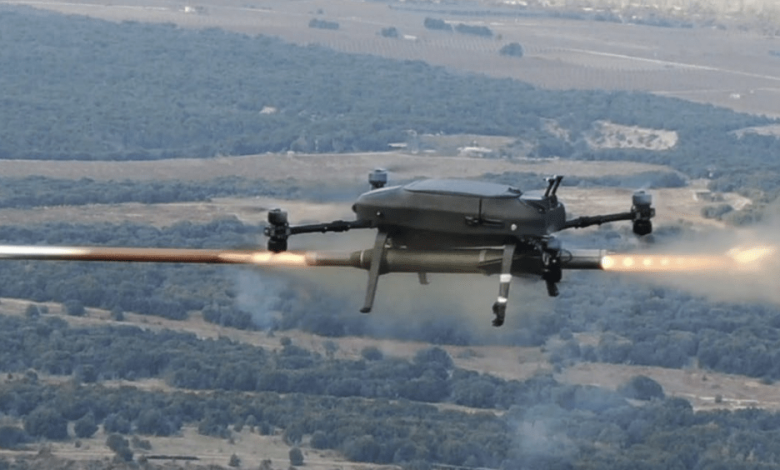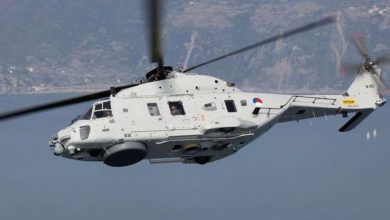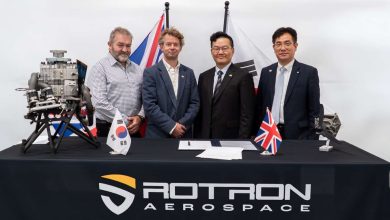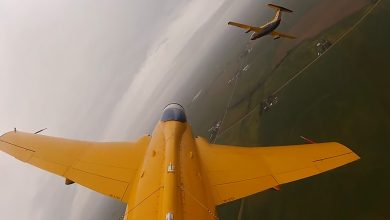
SAS Innovation Shines in SARISA II UCAV Live-Fire Demonstration: Masterful 70mm Precision Strikes at Litochoro Range
SAS Technology, Greece’s leading entity in the advancement and innovation of armed
unmanned aerial systems, has triumphantly concluded an extensive three-day live-fire assessment
(February 10–12, 2025). These evaluations affirmed the advanced operational
competencies of the firm’s UCAV, SARISA II (SRS-2A), signifying yet another crucial milestone in the
evolution of autonomous combat systems.
The assessments highlighted SARISA II’s capability to reliably and accurately launch both unguided
(UGR) and LASER-guided (LGR) 70mm (2.75-inch) rockets from THALES Belgium in
sequential shots, ensuring exceptional precision and remarkable stability.
This campaign marked the final stage of certification for SARISA II, positioning it as the
first UCAV platform worldwide to incorporate and operationally deploy LASER-guided rockets,
specifically the FZ275 LGR from THALES—a technology previously exclusive to manned attack
helicopters and combat aircraft. The evaluations were conducted under the supervision of the Hellenic
Ministry of National Defense, in collaboration with THALES Belgium, and with the necessary
support of Hellenic Defense Systems (HDS), whose technical expertise and assistance were
instrumental in the program’s success.
https://www.youtube.com/watch?v=A-Z2A8KUCzA[/embed>
Day 1 (Feb. 10): Unguided Rocket Launching – Stability & Power
SARISA II effectively launched a 70mm UGR rocket while maintaining a stable hover,
demonstrating outstanding flight stability despite the intense rocket jet blast. The unguided
rocket’s trajectory remained consistent, facilitating accurate targeting with basic optical
sight.
Day 2 (Feb. 11): Laser-Guided Rocket (LGR) Examination – Precision Attacks.
SARISA II successfully deployed an FZ275 LGR LASER-guided rocket, achieving a deviation of merely 0.2m from the
designated target point on a 5x5m surface featuring a central 2x2m region, confirming its proficiency
for high-precision tactical strikes (CEP).
Due to the geographical constraints of the firing range and Weapon Danger Area (WDA)
limitations, the trial was conducted at 1,700 meters, approaching the weapon’s lower operational range. Nevertheless, the FZ275 LGR’s optimal operational range lies between 3 to 5 kilometers, with a
maximum reach of 7 kilometers.
Launching at close ranges presented unique challenges, as the rocket accelerates to supersonic speeds
and deploys its guidance fins after 400 meters, constraining available maneuverability.
However, SARISA II functioned as an exceptionally stable launching platform, ensuring
accurate target acquisition even under these demanding conditions. Notably, the flight,
positioning, and launch sequence were executed entirely autonomously, without manual
aiming from the operator. The engagement depended solely on SARISA II’s proficiency to
independently navigate, align, and stabilize at the launch site with remarkable precision.
Day 3 (Feb. 12): Showcase for Military & International Delegates
The concluding day featured a significant live demonstration, attended by Senior Military
Officials, specialized staff from all branches of the armed forces (Army, Navy, Air Force,
and Special Forces), along with international delegations expressing keen interest in the SARISA
system.
SARISA II successfully launched a supersonic, LASER-guided FZ275 LGR rocket, weighing 12kg,
from an altitude of 450m ASL, showcasing exceptional stability and accuracy,
validating the CEP.
Additionally, the Hellenic Special Forces presented the UCAV Empusa EMPX6T, the first
Greek-designed armed unmanned system in operational service since 2020. EMPUSA executed
precise grenade drop missions, deploying its payload of three grenades in both
sequential and simultaneous modes. The demonstration began with training grenades and concluded with the release of live defense-type grenades, delivering an impressive
performance.
The day’s agenda also included the anticipated release of an AIHMI loitering munition from
SARISA II. However, the emergence of low cloud cover hindered the execution of the AIHMI
SOLM (AHM-1X) release and flight demonstration.
A New Epoch in Unmanned Combat Capabilities
With this remarkable achievement, SARISA II redefines the role of unmanned systems in modern
warfare, providing a more efficient and cost-effective alternative to the traditional, high-cost
deployment of attack helicopters and fighter aircraft for close air support operations.
SAS Technology extends its profound gratitude to its partners at THALES Belgium and Hellenic Defense
Systems (HDS) for their unwavering support and collaboration, as well as the Hellenic Ministry of
National Defense, the Hellenic Army, the 24th Armored Brigade, and the Litochoro Firing
Range, for their essential contributions to the success of this program.







